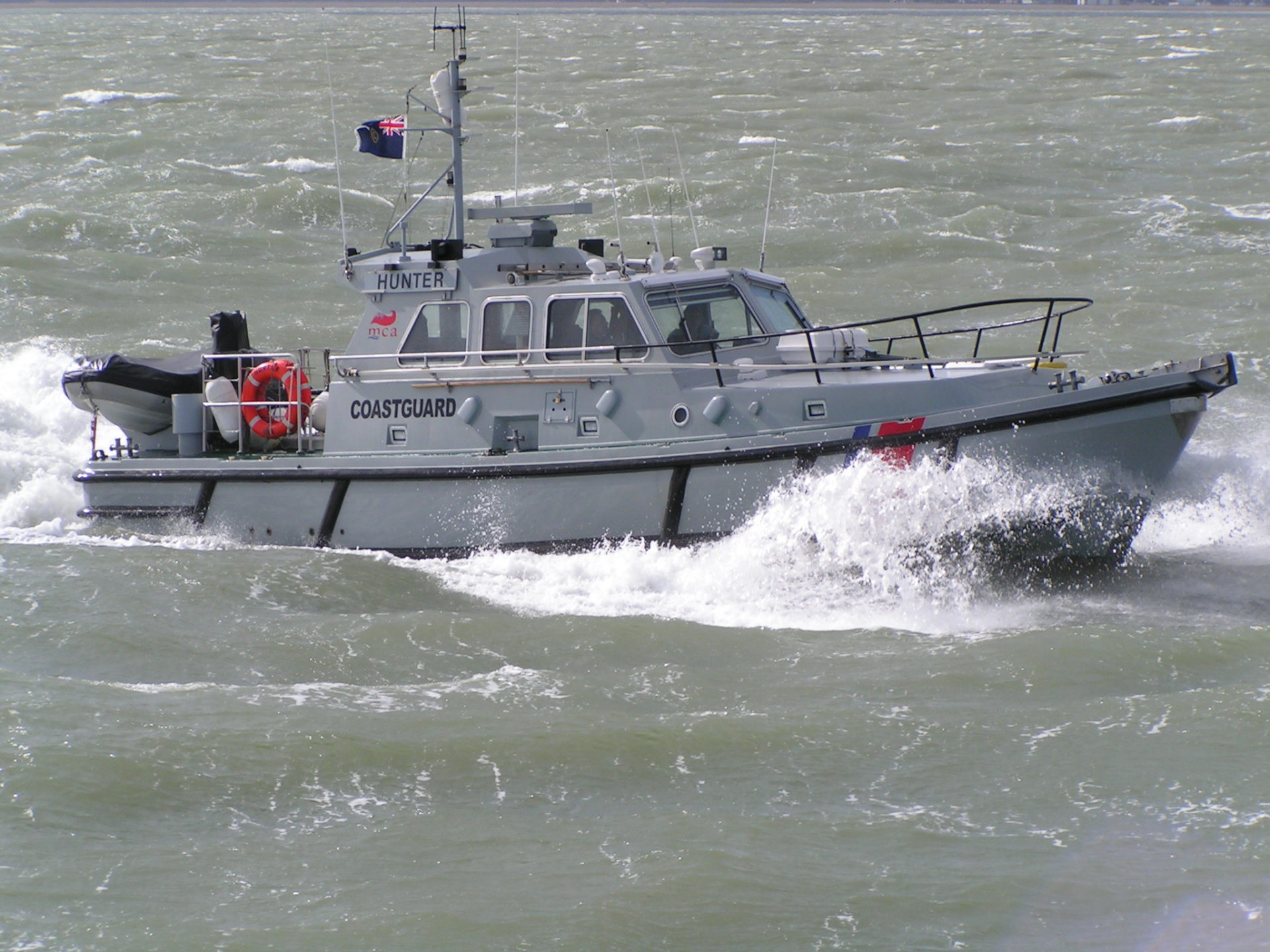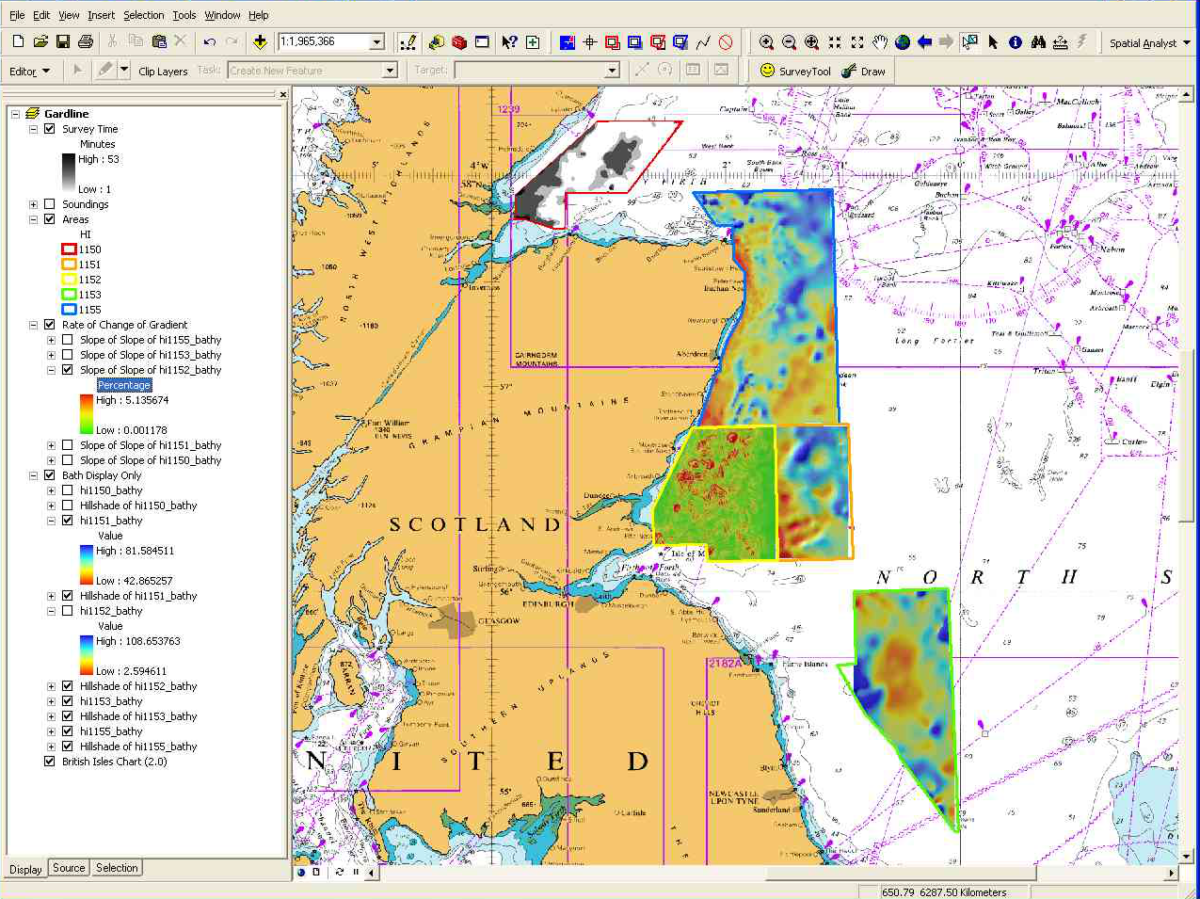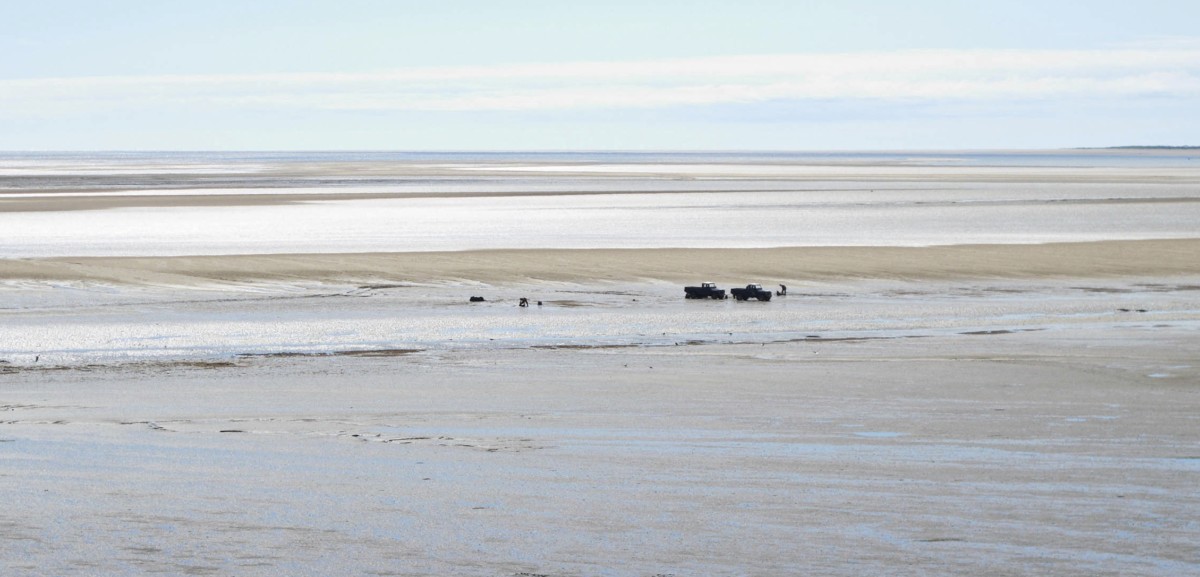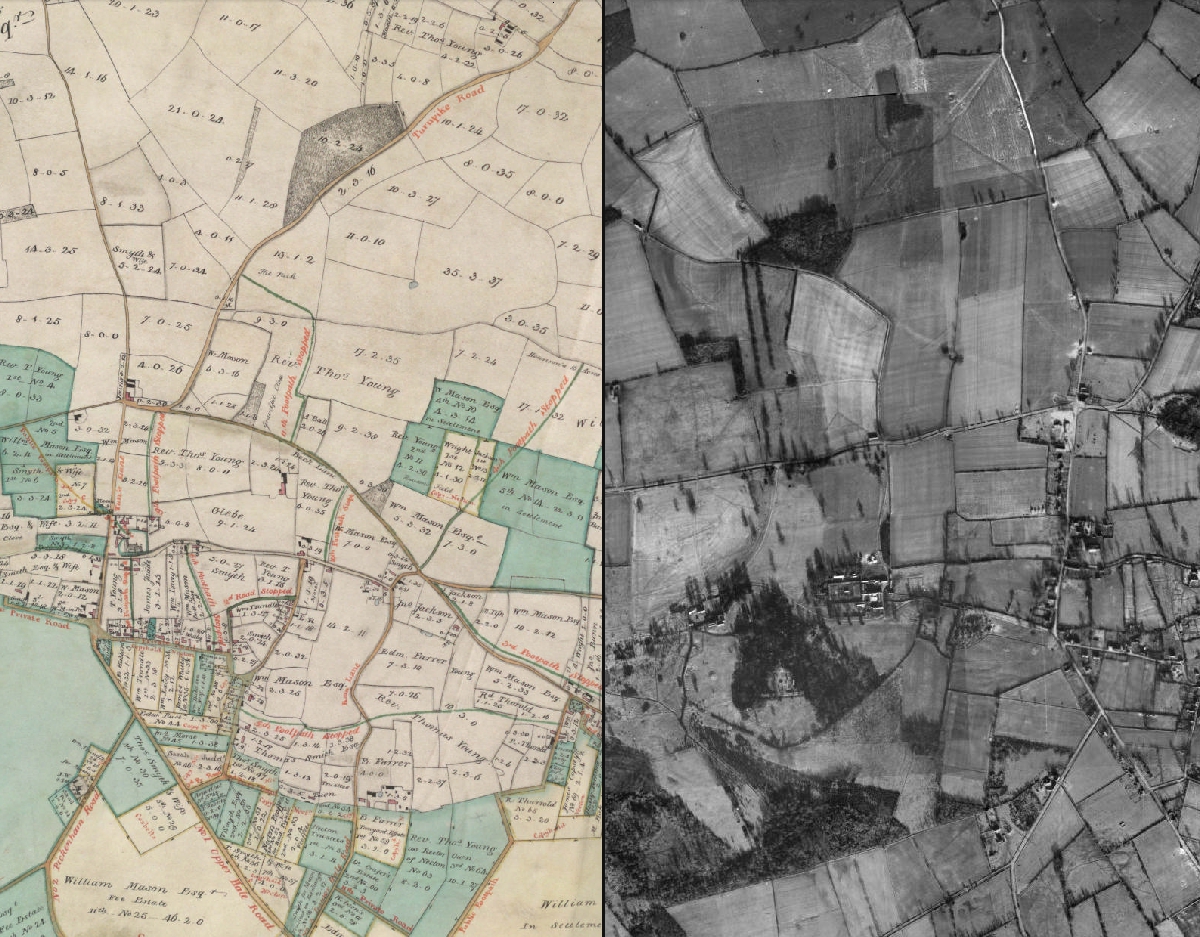Blog Archives
Post navigation

Northern Gas Networks
LocatorHub helps us to rapidly locate problems in emergency situations and provide timely, up-to-date information to customers.
To improve the quality and consistency of address data within its business, Northern Gas Networks (NGN) selected Esri’s LocatorHub solution. It now has a single, centralised source of address information, which helps improve its operational efficiency right across the organisation.
The Customer
Northern Gas Networks (NGN) distributes gas to 2.6m homes and businesses across the north of England. Its 37,000km network extends south from the Scottish border, covering a significant rural area as well as a number of large cities.
NGN has been consistently measured by Ofgem as the most cost-efficient of the eight gas distribution networks in the UK.
Employees in all departments now consult the same accurate source of information to support daily decision making
LocatorHub helps NGN rapidly locate problems in emergency situations and provide timely, up-to-date information to customers
NGN uses LocatorHub to ensure notifications are sent to the correct addresses when potentially disruptive works are planned nearby
The Challenge
Good quality address data is vital for utility companies. Inaccuracies or duplication in address information can seriously impact all sorts of activities, from emergency response times to informing residents of planned works.
However, getting access to accurate data can be challenging. Because the typical utility firm has multiple address datasets across the business, there is a greater risk of duplicated entries. The lack of centralisation also makes finding address data time-consuming, hampering staff efficiency. And given the ever-changing nature of the data – as new roads are laid, buildings are constructed, and house numbers are changed to names – it’s easy for inaccuracies to creep in every day.
The need for a robust process for address management is something that NGN has understood for years. Its network covers not only two of the six largest conurbations in the UK – West Yorkshire and Tyneside – but also an area with the lowest population density outside of Scotland. This mix of dense urban areas and highly remote rural populations makes it vital for NGN to have accurate address data, to keep network maintenance and management as efficient and cost-effective as possible.
That’s why NGN relies on Esri UK’s LocatorHub platform.
LocatorHub ensures we have accurate addresses for everyone, and helps us to plan the most fast and efficient drop route
Pete Crosier – GIS Data Integrity Assistant, NGN
The Solution
LocatorHub is a powerful and flexible address management solution. It gives utilities centralised access to any and all datasets they want to use, from public data from providers such as Ordnance Survey, to their own sets of addresses, roads, network assets, points of interest and more. This creates a ‘single point of truth’ for all location information within the business.
Since 2003, LocatorHub has been the central, accurate repository for all address information across NGN. “Planning, emergency management, customer care, network maintenance, our technicians in the field – every department consults the same, accurate set of data to make decisions daily, which helps us to stay efficient,” explains Pete Crosier, GIS Data Integrity Assistant for NGN.
Importantly, the system gives every location a set of coordinates, to ensure pinpoint accuracy. It also constantly cleanses address data, correcting inaccuracies and removing any duplicates. And it can be embedded into other applications, making it a seamless part of a company’s business processes.
At NGN, LocatorHub is used to find the precise location of key business assets – from depots, to customers, to pipes. And it’s very easy to use; the vast majority of staff refer to the location information via a simple browser-based utility viewer, which lets them search for the information they want using coordinates, standard address formats such as postcode or via asset type or code.
When we first implemented LocatorHub, we didn’t know how powerful it was and how much we would use it. But it’s become absolutely central to everything we do
Pete Crosier – GIS Data Integrity Assistant, NGN
The Benefits
Thanks to the accurate address data in LocatorHub, NGN is equipped to perform a whole range of tasks more efficiently across the business.
This includes managing planned works under the Iron Mains Replacement Programme. NGN needs to replace over 500km of pipe in its network every year, and informing residents of these street works is a regulatory requirement. Sending them to the wrong places or missing residences altogether, however, can result in hefty fines. “LocatorHub ensures we have accurate addresses for everyone, and helps us to plan the most fast and efficient drop route,” says Pete.
Accurate address data is also vital in the event of an emergency. Information that is duplicated or incorrect can seriously hamper response times, or at worst compromise the safety of residents. “If there’s a gas leak, we’ll typically need to turn off a whole estate. Using the data from LocatorHub, we rapidly locate the problem and have all the facts ready for any customers who may call in. We also know straight away if there’s a vulnerable person in the area who will need to be communicated with separately,” confirms Pete.
LocatorHub also helps field staff work more efficiently. “A member of staff might call up to locate something like a pipe or a manhole cover. They’ll typically be working on a restricted laptop, so they won’t be able to access this information themselves,” he explains. “All they need to do is provide a loose description of where it should be – perhaps ‘outside number seven Smith Street’. Through LocatorHub, our internal team can explain exactly what assets are in the area and how to reach them. This helps field staff get to work quickly.”
Importantly, LocatorHub gives NGN the reassurance that ever-changing address data will stay accurate long into the future. “Say we add a new-build connection, for example. It will start as a plot, will later be given a house number, and eventually it’ll have a postcode,” explains Pete. “Because LocatorHub continually cleanses the data, we never have to worry about any old references staying in the system and causing trouble down the line.”
Thanks to regular monthly support from Esri UK, NGN is always discovering new things that LocatorHub can be used for. Pete concludes: “When we first implemented LocatorHub, we didn’t know how powerful it was and how much we would use it. But it’s become absolutely central to everything we do.”

Maritime and Coastguard Agency
The ArcGIS platform is used to analyse multiple datasets to create accurate estimates for survey work and manage contracts more tightly
With responsibility for a £5 million survey budget, the Maritime and Coastguard Agency needed a way to validate bids from contractors to ensure that it was getting good value for money. It used Esri’s ArcGIS platform to help create accurate estimates for work and manage contracts more tightly.
The Customer
The Maritime and Coastguard Agency (MCA) has a remit to ensure ‘Safer Lives, Safer Ships, Cleaner Seas’ on and around 10,500 miles of UK coastline. Headquartered in Southampton the geographically dispersed, 1170 strong staff of the MCA is responsible for implementing the Government’s maritime safety policy.
ArcGIS analyses multiple datasets and parameters to generate an estimated cost of survey information, which can then be compared to contractor quotes
The Maritime and Coastguard Agency can now better manage contract variations and prevent contractors from over quoting
The organisation can gain quantifiable and repeatable results, in much less time, than its previous subjective methods of estimating
The Challenge
One of the key deliverables for the MCA is the provision of survey information to maintain nautical charts (marine maps for mariners) through the Civil Hydrography Programme (CHP). The aim of the CHP is to ensure that UK waters are adequately surveyed to ensure safe passage for shipping in and around the coastal waters of the UK.
The 2004 survey season saw the first use of multi-beam echo sounding technologies to gather bathymetric depth information for inclusion in nautical charts. Although this technology provides greater efficiencies, it has made it difficult for the MCA when responding to contractors tendering for work. With different models of multi-beam sensor, used on different ships, operating in different sea conditions quotes for work now vary dramatically from contractor to contractor.
The MCA needed a solution which would enable it to validate contractors’ bids in an informed, consistent and fair manner, to ensure that the £5 million survey budget is spent in the most efficient and effective way, as well as providing a method for agreeing payment for changes to the survey programme that occurred mid-contract.
The MCA are pleased with the flexibility and functionality of the Esri products it has used to develop the new costing tool
The Solution
The resulting survey costing tool, developed with Esri ArcGIS technology by Esri UK, allows a number of geospatial datasets and parameters to be analysed in order to generate an estimated cost of survey.
The ArcGIS spatial analysis utilises data including:
- The type of echo sounder proposed by the contractor. The survey tool can be configured to take into account proposals which use different survey tools in shallow and deep survey areas. The tool creates a grid of the survey area based on the swath width of the sensors.
- The user defined survey area polygon. This polygon is used to clip out the data required to perform the analysis. Clipping the data reduces the processing overheads. Data including a grid based on soundings is re-sampled to ensure that the pixel size matches that of the sensor swath width.
- Temporal information such as the maximum survey speed the ship may attain without degrading quality of survey data, downtime for crew rotation and ship turns.
- The maximum, mean and standard deviation of wave heights in the survey area. This information, provided by the Met Office, enables the calculation of the likely downtime a survey vessel may experience per calendar month.
All of the spatial grids are added up to allow a cost to be assigned to each pixel. This in turn allows the calculation of estimated survey cost. A map of the number of survey lines required to complete the survey along with statistics on how the estimate has been generated, is automatically populated within a Microsoft Excel spreadsheet. This spreadsheet forms the basis for contract negotiations between the MCA and survey contractors.

Example of the areas to be surveyed with user defined parameters
The Benefits
The use of the survey costing tool has enabled the MCA to analyse the datasets required to create accurate estimates for the commissioning of hydrographic surveys. The costing tool allows the MCA to:
- Manage contract variations with a pre-agreed costing methodology preventing contractors over-quoting for variations.
- Determine the cost of proposed survey areas quickly in advance, ensuring that the “cost” in the cost-benefit equation is known precisely when choosing areas to survey.
- Providing quantifiable and repeatable results in much less time, rather than the old subjective, manual method of determining costs for surveys.
- Supporting business cases that the MCA puts forward for additional funding for hydrography.

Output of results indicating total number of days required to complete the survey
The Future
The survey costing tool could be made available to sister organisations around the world. Due to the parameter driven nature of the application and its development in ArcObjects, the tool is easily customisable to allow for localised environmental factors. There are plans for the costing tool to be enhanced to be able to calculate risk to the mariner of not surveying a particular area. The tool could thus calculate risk and cost, and an algorithm could be written to determine where the MCA should survey in order to maximise the benefit from its budget.

Meat Hygiene Service
ArcGIS aids communication with partners during suspected outbreaks of animal disease and helps us allocate the right people to the best location
During a wide-ranging business transformation programme, the Meat Hygiene Service used Esri’s ArcGIS Server to help make informed decisions about the future of its organisation. It then continued to use GIS to improve operational efficiency and enhance communication with partners.
The Customer
The Meat Hygiene Service (MHS) is an executive agency of the Food Standards Agency (FSA) that is responsible for protecting public health and animal welfare. It has a statutory duty to provide veterinary and meat hygiene inspectors on demand, 24 hours a day, 365 days a year, across England, Scotland and Wales; slaughterhouses can only operate in the presence of MHS veterinary and meat hygiene inspectors.
The Meat Hygiene Service used ArcGIS to inform important decisions about the reorganisation of its business into regional clusters
ArcGIS helps the organisation to allocate the right people with the right skills to the best locations, improving operational efficiency and customer service
ArcGIS aids communication with partners, particularly vital during suspected outbreaks of animal disease
The Challenge
The MHS was committed to wide-ranging business transformation, led by senior executives with a clear vision of a more efficient organisation delivering a good and consistent service. Jenny Sergeant, IT Director, had a detailed knowledge of geographic information systems (GIS), but GIS was not used within MHS: “I wanted to try to raise an appetite for GIS with my colleagues, because I could see a thousand different ways that it could benefit the business, particularly during this period of transformation.” One day, she found some business users huddled around two large printed maps. “They were using pieces of coloured paper and sticky tape to mark out the proposed new areas that would be created from the business transformation. I just had to show them that there was a much better way.”
The Esri UK consultant was exceptionally good and worked very well with the person designated to become our new in-house GIS expert
Jenny Sergeant – IT Director
The Solution
MHS implemented a single repository for spatial data, based on ArcGIS Server and linked to existing business systems, so that GIS applications always use current data. Next, MHS identified business critical applications that could quickly add value during the restructuring. In addition, a consultant worked on-site to share expertise and transfer skills. “The Esri UK consultant was exceptionally good and worked very well with the person designated to become our new in-house GIS expert”, says Sergeant.
ArcGIS makes the business intelligence and knowledge that we have easier to understand. We can therefore use it to make better informed business decisions
Jenny Sergeant – IT Director
The Benefits
Sergeant believes ArcGIS was crucial in re-structuring MHS. “It allowed us to make informed decisions about the future and the direction we want to take”, she says. Business manager Martin Evans explains: “We used ArcGIS to create 37 clusters of similar business value, taking into account the numbers of plants, the locations of staff, the geography of the area and the road infrastructure.” Changes to the plans were reflected in the GIS in a couple of hours, rather than up to six weeks with paper maps. Regional offices have gone and business managers and veterinary managers are homebased and grouped in clusters. MHS can clearly see which plants produce which meat products and allocate staff based on location and individual skills and qualifications. MHS monitors clusters, making adjustments where necessary. For example, flexibly allocating staff to where they are most needed, improving cost efficiency and service levels.
Human resources is benefitting too. Identifying mutually convenient locations for training is easy with GIS (but difficult from a spreadsheet). “It helps us to cut costs by reducing the need for long journeys and overnight stays”, says Sergeant. In addition, MHS uses maps to explore sickness patterns; managers can drill down to identify trends by region, plant and individual. “ArcGIS makes the business intelligence and knowledge that we have easier to understand. We can therefore use it to make better informed business decisions.” The service levels MHS provides are more consistent across regions. “Using a map, we can easily see the number of animals per employee in each plant… We can then make sure that we allocate similar numbers of staff to plants of similar sizes. This enables us to deliver a consistent approach to law enforcement across the country.”
Sharing spatial information is also easier, because DEFRA and the FSA already used Esri GIS. When there is an outbreak of animal disease, for example, MHS can load a DEFRA map of the affected zone. “Instead of having to hand-draw the protection and surveillance zones on a map, we can immediately see which plants are not operating and which employees can be reallocated to other plants”, says Sergeant. Similarly, as soon as MHS receives notification of a suspected case of disease, it can distribute accurate maps to veterinary experts, so they can be alert for nearby cases.
MHS plans a new IT infrastructure for its refurbished offices, including ArcGIS over its intranet, so that “it will be available as a means for everyone to access any information that they might need to support all aspects of their work, using ArcGIS as an everyday business tool” says Sergeant.

Natural England
Esri UK delivered a uniquely tailored training course using our data and resources, helping over 400 employees is various job roles
After making the decision to standardise on Esri’s ArcGIS Desktop solution throughout its entire organisation, Natural England commissioned Esri UK to deliver bespoke training for 428 employees. The course delivered was both cost effective and highly relevant to multiple users and their varied job roles
The Customer
Natural England advises the government on the best ways to protect and improve England’s natural environment. It works with farmers, landowners, businesses and local groups to ensure the sustainable use of land and sea, and encourages people to enjoy their surroundings.
Being uniquely tailored to Natural England, the course helped give employees a better understanding of the data and resources within the organisation
The course received excellent feedback from employees, 90% of whom stated that it provided the necessary knowledge for them to use ArcGIS Desktop in their work
Natural England believes that Esri UK’s bespoke training was more cost effective than standard courses or training developed in-house
The Challenge
Natural England was founded in 2006 from the merger of the Countryside Agency, English Nature and the Rural Development Service. Each of these three organisations used different geospatial information system (GIS) solutions to support many programmes of work. Natural England inherited not only a mix of disparate GIS applications, but also distinct teams of employees with different skill sets.
This lack of uniformity led to a number of challenges for Natural England. In the IT department, significant amounts of time were consumed preparing spatial data in alternate formats for different systems, and maintenance of the disparate GIS systems was unnecessarily complex. In addition, new employees often had to be trained in multiple systems, while existing employees couldn’t easily transition into new roles.
To remedy the problem, Natural England made the strategic decision to consolidate all its spatial data and applications on a single GIS platform, Esri’s ArcGIS. “GIS is absolutely pivotal to the majority of our work,” explains Simon Coleman, GIS analyst at Natural England. “Our aim was to build a geographically literate organisation and bring everyone together under one GIS system.”
The first challenge was to up-skill 400 GIS users with different backgrounds to a common level of understanding. These users fulfilled a huge range of job roles from managing nature reserves to monitoring soil erosion and implementing EU-funded farming schemes. “Our employees’ skill sets were really varied,” says Coleman. “Different teams used different GIS packages in different ways to fulfil niche roles. As part of our migration to ArcGIS, we had to organise a comprehensive programme of training that would meet the needs of everyone.”
The second challenge was to arrange 39 courses across England, from Exeter and Kendal to Newcastle and Ashford.
Different teams used different GIS packages in different ways to fulfil niche roles. As part of our migration to ArcGIS, we had to organise a comprehensive programme of training that would meet the needs of everyone
Simon Coleman – GIS analyst at Natural England
The Solution
Natural England commissioned Esri UK to design and deliver a bespoke, on-site training course for ArcGIS Desktop. The organisation wanted Esri UK to repeat the course on different dates and at different locations, so that its employees could choose to attend whenever and wherever it was most convenient. Consequently, the course had to be flexible enough to meet the needs of all employees, no matter what their experience or job role.
The Migrating to ArcGIS Desktop Foundation course designed by Esri UK covered a wide range of skills from querying, selecting and finding features to analysing habitat data. It was tailored to Natural England’s business and used the organisation’s own data as part of examples and exercises. In total, Esri UK trained 428 employees in 39 separate training sessions, over the course of eight months.
Esri UK designed and delivered bespoke training to meet the needs of over 400 employees with diverse skills and job roles. The course was cost effective, professional and relevant to our business
Phillipa Swanton – Principal Adviser, Geographic Literacy, Natural England
The Benefits
The success of Natural England’s single-platform GIS strategy hinged on the success of its training programme. Put simply, if employees couldn’t transition effectively to ArcGIS, all the benefits and cost-savings of consolidation would not be achieved. Fortunately, however, the training was highly effective, paving the way for the organisation to achieve its strategic goals.
Feedback from delegates was extremely positive, and GIS novices and experienced users alike reported that the course met their needs. In a survey completed following the conclusion of the training, 90% of employees stated that the course provided them with the necessary knowledge to use ArcGIS Desktop in their work.
Because the course was bespoke, Esri UK was able to incorporate training on how and where spatial data is held within Natural England. “Often employees aren’t aware of how much data we hold and how to access it,” Coleman says. “The training gave us a really good opportunity to improve employees’ knowledge of the range of resources available and how to use them effectively.”
The training provided was significantly less expensive than alternative options. If Natural England had sent its employees on standard, open courses instead, the cost per head would have been far greater, plus additional expenses for travel and accommodation may have been incurred. Equally, the organisation estimates that it would have had to have invested 60 days of staff time to develop course materials from scratch and deliver the course itself, in-house.
Now the training is complete, Natural England is all set to reap the benefits of consolidation. Employees can move easily between departments and roles, share data and work more collaboratively – without encountering skills barriers. Natural England will also no longer have to license and manage multiple systems which will deliver sustainable, long-term financial savings. It only has to maintain its numerous data sets in one format, which will save around 200 days of time. Furthermore, the organisation estimates that it could reduce software licensing and IT support costs by as much as a third.

Natural Resources Wales
Esri UK's onsite training helped us to analyse survey data and gave us the confidence to push ahead with a new approach to cockle bed management
An on-site training course, designed and delivered by Esri UK, gave Natural Resources Wales the confidence to use GIS in a project to survey and manage protected cockle beds. The organisation can now analyse its survey results with greater accuracy, present data more clearly and make the best possible decisions to resolve the conflicting interests of fishermen and seabirds.
The Customer
Natural Resources Wales advises the Welsh Government about the environment in Wales, helping to ensure that all natural resources are maintained, enhanced and used in a sustainable way. The organisation consolidates activities previously carried out by the Countryside Council for Wales, Environment Agency Wales and Forestry Commission Wales.
The use of ArcGIS, in place of spreadsheets, gives the fisheries team greater accuracy and consistency in the reporting of its cockle bed survey results
ArcGIS allows the cockle bed survey results to be presented in a more visual format, making the findings easier for different stakeholders to understand them
The onsite, tailored training course proved highly cost effective, as it was made available to multiple teams within the organisation
The Challenge
Tucked away in a corner of South Wales is a saltwater estuary that is a Special Protection Area of European significance. Called the Burry Inlet, it comprises over 4,000 hectares of mudflats, sand dunes and salt marshes. The region is home to millions of cockles, and commercial cockle fishing has taken place in the area for over a hundred years. However, cockles also provide a critical source of food for up to 13,000 overwintering birds including Oystercatchers, Knots, Shovelers and Pintails.
Natural Resources Wales is charged with managing these precious cockle beds and regulating fishing, to ensure that sufficient stock remains to nourish the internationally important wildfowl population. Twice a year, it collects sample data from 400 survey points throughout the estuary, calculates the biomass of cockles and uses this information to set fishing quotas called the Total Allowable Catch (TAC).
For many years, the organisation had tabulated the results of the survey in Microsoft Excel spreadsheets. Elsewhere in the organisation, however, geographic information system (GIS) technology was used with great success, and the fisheries management team recognised that it could use GIS to improve the calculation and presentation of its survey results. “GIS was undeniably the way forwards,” says Dave Tavner, technical officer for the fisheries management team at Natural Resources Wales. “We had used GIS previously, but we were a bit unsure about how to get started in using it for our cockle surveys.”
The GIS method is less open to mistakes and gives us greater confidence in our calculations. Once the parameters are set correctly, the analysis is run with a few clicks of the mouse
Dave Tavner – Technical Officer, Fisheries Management Team, Natural Resources Wales
The Solution
Natural Resources Wales approached Esri UK and arranged a one-day, tailored training course, to be delivered at the organisation’s own premises. The course was designed specifically to cater for the needs of the fisheries department and the trainer focused on showing the cockle fisheries team precisely those tools and techniques that would enable them to replace spreadsheets and transform their existing survey process.
Natural Resources Wales already had an Enterprise License Agreement with Esri UK for the use of Esri’s ArcGIS platform. The fisheries team therefore did not need to make any additional investment in software, in order to be able to develop its new GIS application.
Following the training course, Dave Tavner and his colleagues were able to use GIS to help them collate, analyse, calculate and present their survey results. The team took advantage of Esri’s Spatial Analyst extension, in particular, and employed tools such as ‘zonal statistics’ to accurately calculate the cockle biomass. In addition, the team used the GIS application to create visualisations of the estuary, including ‘hot spot maps’ showing those areas with the highest density of cockles.
Esri UK’s onsite training gave us the confidence to push ahead with a new approach to cockle management. GIS is now helping us to quantify the cockle population and take appropriate steps to meet the needs of fishermen and birds alike
Dave Tavner – Technical Officer, Fisheries Management Team, Natural Resources Wales
The Benefits
The use of ArcGIS gives the cockle fisheries team greater accuracy and consistency in the reporting of its survey results. “The GIS method is less open to mistakes and gives us greater confidence in our calculations,” says Tavner. “Once the parameters are set correctly, the analysis is run with a few clicks of the mouse.”
What is more, ArcGIS enables the organisation to present its survey results in a far more visual and attractive format on digital maps, which are much easier for people to understand. “The hot spot maps that we can produce using ArcGIS are particularly effective,” Tavner says. “They help us to justify our decision to allow cockle fishing in a European marine conservation area.”
The onsite training delivered by Esri UK was of a very high quality and – being tailored to the organisation’s needs – gave the team precisely the skills they needed to use GIS in a new way. “Having training that was specific to our job was really helpful,” admits Tavner. “It showed us new techniques for achieving our goals.”
He adds: “Esri UK’s onsite training gave us the confidence to push ahead with a new approach to cockle management. GIS is now helping us to quantify the cockle population and take appropriate steps to meet the needs of fishermen and birds alike.”
Because the Esri UK trainer came to Natural Resources Wales’ own offices, Tavner was able to invite colleagues from the hydro-acoustic fisheries assessment department to participate too. The course was therefore highly cost effective and delivered benefits to a larger number of employees, some of whom may not otherwise have had the opportunity to access GIS training.

Sadler Consultants
Esri UK's Content Services Team helped set up information about traffic restrictions in 31 European countries on one easily accessible interactive map
A firm of air quality consultants has used Esri’s ArcGIS Online to develop a website for the European Commission that makes information about traffic restrictions in 31 European countries, easily accessible, from one interactive map. This comprehensive online service is expected to save time and money for drivers and vehicle operators, while helping to reduce urban pollution across the EU.
Esri UK’s Content Services team provided valuable consulting and data preparation support, which led to the inclusion of more comprehensive information for over 8,000 towns and cities, across Europe
Users view a map of the whole of Europe on the website, zoom into a specific country, region, city or town and simply click on their areas of interest to obtain accurate information about traffic restrictions
ArcGIS Online ensures that users experience consistently good website performance, whether they are using a PC, laptop, mobile tablet or smartphone, and displays information in 26 languages
The Challenge
It is a shocking but little-known fact that more people die from the effects of air pollution than are killed in road accidents in Europe. Furthermore, the cost of providing healthcare to alleviate the suffering caused by air pollution in the European Union (EU) is estimated to be as high as €790 million. To protect their populations, many European countries and cities have introduced traffic regulations in urban areas. Yet, while these measures help to improve air quality and reduce congestion, they can be confusing for drivers.
Haulage companies and coach operators that need to plan deliveries or tours in multiple European cities find it hard to obtain information about the many different types of restrictions in specific locations. They don’t know exactly where road charging schemes are in force or how to obtain a permit; they don’t know where weight and height restrictions exist which might influence their choice of vehicle; and they don’t know the locations of low emission zones or how to check to see if their vehicles will comply. For private drivers and small businesses planning one-off trips to European cities, it can be even harder to obtain this information.
To address this challenge, the European Commission (the EU’s executive body) appointed the specialist air quality consultancy Sadler Consultants Limited to develop a multilingual public website to consolidate information about urban access regulation schemes in Europe. The first version of this online facility was extremely well received, but the EU wanted to broaden it to include data on all traffic restrictions. Sadler Consultants also wanted to upgrade the web site’s mapping, which did not perform well on mobile devices or allow users to zoom in and out easily.
The website uses Esri’s ArcGIS Online to make it easier for drivers to understand and adhere to traffic restrictions in over 8,000 towns and cities in 31 European countries
The Solution
When Sadler Consultants upgraded and re-launched the web site, it replaced the previous FLASH-based map with Esri’s ArcGIS Online, a web-based geographic information system (GIS) solution that adapts effortlessly to any device. Users can now view a map of the whole of Europe on the website, zoom in to a specific country, region, city or town and click on their areas of interest. They can elect to view all restrictions or just certain types of regulation by checking boxes in an adjacent legend. Pop-up boxes then appear with detailed maps of relevant restrictions in the highlighted urban areas, and users can click in these boxes for full details, in any of 26 languages, including minority and non-EU languages.
GIS experts from Esri UK advised Sadler Consultants on the deployment of ArcGIS Online and assisted in the redevelopment of the website. In addition, Esri UK’s Content Services team provided expert guidance on appropriate data sources and brokered a data licensing deal with sat nav data provider HERE (formerly NAVTEQ). The team took HERE data on traffic restrictions in European towns and cities and converted this road network data into polygons depicting whole zones where restrictions apply. The data was then used in a series of ArcGIS Online maps configured by the Content Services team for use in the project.
It is my hope that the website will help support both towns and cities as well as vehicle operators, help to reduce pollution, noise and traffic in urban areas and improve lives across Europe
Lucy Sadler – Director, Sadler Consultant
The Benefits
The incorporation of ArcGIS Online into www.urbanaccessregulations.eu has transformed the site, making it more intuitive to navigate and providing an exceptional user experience on mobiles and tablets. “ArcGIS Online gives us an interactive interface that people can use to easily plan their journeys,” says Lucy Sadler, director of Sadler Consultants. “The pop-ups give users summary information without having to leave the map. It works brilliantly!”
The information available on the website is also significantly more extensive than it was previously; thanks to the inclusion of HERE data, sourced and prepared by Esri UK, the site now offers – for the first time – details on the height, width, length and weight restrictions for all European towns and cities (over 8,000). “Haulage companies and tour operators have long been lobbying the EU for a service as comprehensive as this and now we can provide it for them,” Sadler says.
In liaising with HERE, Esri UK was able to secure a cost-effective data pricing model for the EU, and this led to a further improvement in the quality of the website, as Sadler explains. “Thanks to Esri UK’s negotiation and data preparation, we had more funds available to investigate the more complex traffic regulations, which need more details than those provided through the HERE data, so could produce a more comprehensive record of restrictions for the whole of the EU.”
Over time, commercial vehicle operators and private individuals will save time and money from use of the website. They won’t waste hours trying to obtain and understand information that only exists in foreign languages and will avoid accidental penalties from not knowing a scheme exists.
Ultimately, the main aim is that the website will have a profound health benefit for millions of Europeans. Mindful of the many EU directives on air quality and the environment, Sadler concludes, “It is my hope that the website will help support both towns and cities as well as vehicle operators, help to reduce pollution, noise and traffic in urban areas and improve lives across Europe.”

Scottish Natural Heritage: Data Services
Esri UK’s online data service has freed up resource time, saved us £5,000 per year and delivers exceptional user performance
Maintaining the background mapping for its many GIS applications used to be a challenging and time-consuming process for Scottish Natural Heritage (SNH). The organisation is now able to rely on Esri UK’s online data service, which both saves time and enhances the user experience.
The Customer
Scottish Natural Heritage (SNH) is the Scottish Government’s advisor on all aspects of nature and landscape across Scotland. Its role is to help everyone understand, value and enjoy Scotland’s nature now and in the future. It does this by providing advice and information to support projects that benefit wildlife, habitats and landscapes, or that encourage more people to enjoy nature responsibly.
GIS professionals no longer have to spend hours at a time updating the background mapping for the organisation’s GIS applications
For no additional cost, SNH now has access to a vast library of maps including large-scale maps that would otherwise have cost up to £5,000 a year
Esri UK’s online data service delivers exceptional user performance and can scale up to meet unexpected peaks in traffic
The Challenge
SNH is legally required to “actively disseminate” natural heritage information, but felt that answering inquiries as they arose by telephone, fax and post was not fully satisfying these obligations.
“We wanted to be able to provide a better service to the public, as well as save time and money”, Mark Robson, GIS Manager says. Consequently, SNH decided to develop an interactive mapping service to deliver information, whether about wildlife in the Cairngorms, facts about a Site of Special Scientific Interest or for planning a trip to a National Nature Reserve.
We wanted something that we could develop very rapidly, that would offer us ‘Web 2.0’ type capabilities and that could easily be integrated with the rest of the organisation’s website
Mark Robson – GIS Manager at SNH
The Solution
As a longstanding user of GIS, SNH needed a web-based solution that was compatible with their existing GIS architecture. “We wanted something that we could develop very rapidly, that would offer us ‘Web 2.0’ type capabilities and that could easily be integrated with the rest of the organisation’s website”, says Mark Robson, GIS Manager.
Esri UK’s Customer Care team worked closely with SNH’s GIS team to migrate from ArcIMS to the latest version of ArcGIS Server, which includes the Flex Application Programming Interface (API).
Flex made it easy to create web-based mapping applications with the desired look, feel and general style, and SNH was able to create a proof of concept application within a matter of hours. In development, SNH used ESRI’s hosted services, while still implementing ArcGIS Server. “When ArcGIS went live, it was very easy for me to switch from the hosted system to our own system,” says Richard Betts, Senior GIS Officer.
A key capability of Flex is its ability to integrate data and services from third parties. SNH created a mash-up, seamlessly importing species data from the National Biodiversity Network (NBN) into its own website. “Previously, we had provided a lot of information into the NBN, but we needed a way of making that information accessible to our own customers,” explains Richard Betts, Senior GIS Officer
SNH’s GIS team found the documentation on resources.esri.com well organised and well written. This helped them understand the capabilities of the ArcGIS Server and speeded up application development. “The whole application build took less than four months”, estimates Betts. “Considering how much new software was involved and the complexity of our environment, that was pretty quick.”
ArcGIS Server allows us to deliver information in a far more accessible way and to a wider range of people, from planners and developers to school children
Mark Robson – GIS Manager at SNH
The Benefits
The site is helping achieve the goals of openness and value for money for the people of Scotland. SNH launched its interactive mapping in March 2009 and the site attracts an average of 3,000 visitors per month, with 20,000 individual page views per month. Most importantly, two thirds of users are return customers. “This demonstrates that users value the site and consider it worth visiting again,” says Betts. “We have been pleasantly surprised by the amount of unprompted positive feedback we have received from both users and partners,” says Robson.
Whereas it used to take over a day of an area officer’s time to answer a fairly standard query, now customers can easily find information for themselves. “GIS enables us to work more efficiently and frees up people’s time to focus on the quality aspects of information management”, observes Alan McKirdy, Head of Information Management.
New audiences now access SNH data. “ArcGIS Server allows us to deliver information in a far more accessible way and to a wider range of people, from planners and developers to school children”, explains Robson.
GIS enables us to work more efficiently and frees up people’s time to focus on the quality aspect of information management
Ian McKirdy – Head of Information Management at SNH
The Future
More content will be made available online. “Self service has proved to be better for our customers and a more efficient use of our time”, says Robson. “The next step is to take advantage of the simplicity of the ArcGIS Flex API to expand this service to cover all our data.”
Robson and Betts believe that the wider deployment of online interactive mapping will help to elevate SNH’s reputation. “It is now much easier for people to see what we do, what we stand for and why we are here”, concludes Robson. “Use of GIS on our website is helping to increase awareness of the value of what we deliver for the people of Scotland.

Newham Council
Esri UK’s School Locator App has improved the administration process by providing greater transparency to ensure places are allocated fairly.
With rising numbers of pupils in its borough, Newham Council needed a better way to ensure that school places are allocated fairly based on home to school distances. The solution it developed with Esri UK, the School Locator app, is saving the council significant processing time while improving full transparency of the process for parents.
The Customer
Newham Council is the local authority for the London Borough of Newham, serving a population of 310,500.
The council’s school admissions team can work much more efficiently, maintain high quality standards and process larger volumes of applications with the same number of staff
Parents can access the School Locator app online and see the same information used by the council, including catchment areas and the home-to-school distances tie breakers
The improved school admissions process is expected to save the council money by reducing the number of parent query calls to the call centre and minimising potentially costly appeals
The Challenge
While small in size, Newham Council has one of the largest cohorts of pupils in the whole of London. It processes in excess of 5,000 reception applications and around 4,000 year 7 applications every autumn. In addition, it must allocate school places in response to 7-8,000 in-year applications per annum.
The council had an existing IT system that it used to help it allocate school places according to strict over-subscription criteria, including what catchment and parish children live in and the home-to-school distance (shortest walking distance or straight line). However, this system was very cumbersome and did little to speed up what was a timeconsuming, complex and stressful task for the admissions team.
To ensure the quality of its decisions, team leaders used to rigorously check and quadruple check the school allocations. This wasn’t an optimal use of manager time, but the council vehemently wanted to focus on the family and avoid mistakes so every child received the correct school offer. If, for example, home-to-school distances were inaccurately calculated, it could lead to an increase in appeals, substantial administrative and legal costs, damaging negative publicity and a loss of trust in the community.
While council staff found the demands of the admissions process complex, so too did parents and guardians. Many families found it hard to understand how places were allocated, and high volumes of calls were made to the council call centre every year requesting information on home-to-school distances and the precise boundaries of catchments. These telephone enquiries were costly for the council and not necessarily particularly illuminating for parents and guardians.
Esri UK went the extra mile, investing time in really understanding our needs. We had a tight deadline and it seemed like an impossible ask, but, in short, the consultants moved me from a big idea with a skeleton specification to an excellent solution in less than three months
Tracy Jones – Group Manager for Pupil Services, Newham Council
The Solution
Esri UK worked with Newham Council to design a geographic information system (GIS) to precisely address all these issues. Called the Esri UK School Locator app, this solution integrates with the council’s existing CACI admissions system and rapidly calculates accurate catchment and distance information for each pupil and school preference. The solution also integrates with the council’s Local Land and Property Gazetteer (LLPG), to give it accurate, up-to-date address information.
Not just for internal use, the School Locator app also serves up a public-facing web site, where parents and guardians can see catchment areas, Catholic parishes, closest schools, interactive maps and the all-important home-to-school distances tie-breakers (both shortest walking and straight line), most of which would previously have been impossible for the public to determine without contacting the council by telephone.
“Esri UK went the extra mile, investing time in really understanding our needs,” says Tracy Jones, group manager for pupil services at Newham Council. “We had a tight deadline and it seemed like an impossible ask, but, in short, the consultants moved me from a big idea with a skeleton specification to an excellent solution in less than three months.”
Pupil numbers are steadily rising across Newham, year after year, due to the baby boom and the ongoing regeneration of the borough. Use of Esri UK’s School Locator app will enable us to handle this volume increase, and maintain our high quality standards, with the same number of staff
Tracy Jones – Group Manager for Pupil Services, Newham Council
The Benefits
The introduction of Esri UK’s School Locator app is enabling the school admissions team to work much more efficiently and process applications more quickly. “Pupil numbers are steadily rising in Newham, year after year, due to the baby boom and ongoing regeneration of the borough,” says Jones. “Use of Esri UK’s School Locator app will enable us to handle this volume increase, and maintain our high quality standards, with the same number of staff.”
Significantly, the School Locator app has given Newham Council true confidence in the rigour of its school admissions process and reduced risk. It knows that the decisions it makes are all based on accurate location information and the same criteria are applied consistently to all applications. “There is less chance of human error, so less risk of us losing a case under stage one of the appeals process,” says Jones.
The greatest benefit, in Jones’ view, is the clarity the solution delivers for residents. Schools and families can now simply visit a web site to see exactly which catchment pupils live in, identify their nearest schools and calculate distances. The information they see is exactly the same that the council sees, so there is complete openness about council decisions.
The elected mayor of Newham, Sir Robin Wales, is committed to ensuring that the council provides the best possible services for residents and that it is transparent in its decision making process. The development of the School Locator app is one initiative that really supports and delivers on this agenda. It gives residents an online tool that demystifies the school application process, and reduces call centre costs at the same time.
The fact that parents have more transparency into how decisions are made may lead to a reduction in appeals. Newham Council typically handles over 1,500 school admission appeals a year, at a cost of around £50 each. If the Esri UK School Locator app were to decrease this figure by just 20%, for example, it would save the council £15,000 a year. By reducing the odds of appeals progressing to judicial review, the app could potentially save the council many more tens of thousands of pounds.

Norfolk County Council
LocatorHub has given us a centralised address management solution which translates into more efficient services for both staff and citizens.
As a precursor to expanding its use of GIS, Norfolk County Council selected Esri’s LocatorHub solution to create a single gazetteer to deliver accurate and consistent address information to all its GIS systems. LocatorHub is easy to use, cost efficient to maintain and capable of meeting all the council’s current and future needs.
The Customer
Norfolk County Council (NCC) provides services for one of the largest counties in England, covering around 2,000 square miles and home to 860,000 residents. The city of Norwich is the county town of Norfolk with other significant centres of population found in Great Yarmouth, King’s Lynn and Thetford, plus a number of smaller market towns.
Esri GIS has been used for several years by NCC to help achieve cost savings and improve decision making, within areas such as Planning, Environment, Transport and Highways. An enterprise geodatabase is used by around 80 desktop users plus multiple internal and external websites.
LocatorHub gives the council a single, centralised version of all its address data that is accurate and consistent
The solution underpins all of the council’s existing GIS services, including its ‘Where I Live’ service, used by the general public on the council’s website
LocatorHub is simple and easy for the council’s GIS team to maintain, saving employee time while reducing costs
The Challenge
NCC was looking to expand the footprint of GIS across the council as potential additional savings from using the technology became apparent. An essential part of this was the need for accurate address management, to underpin a wide variety of new websites and applications, as Tim Hudson, GIS Manager, Norfolk County Council explained: “We wanted to create one central version of all of our address data that was easy to maintain and find a straightforward approach to geocoding. Creating centralised address management would also deliver a very lean and cost effective approach to future GIS projects.”
LocatorHub offered everything we needed in a single package that is easy to integrate and work with
Tony Collins – Technical Lead at NCC for LocatorHub implementation
The Solution
The GIS team used LocatorHub to create a single address gazetteer that every internal and external application can search against. Connected to OS AddressPoint data (soon to be OS AddressBase), LocatorHub is always working with the most up-to-date information available.
“LocatorHub offered everything we needed in a single package that is easy to integrate and work with,” commented Tony Collins, Technical Lead at NCC for LocatorHub implementation. “Connecting it to all of our GIS systems and mapping applications, across desktop, web or mobile platforms was very simple and has given us an easy-touse, responsive gazetteer.”
LocatorHub allows users to quickly find and view addresses when using NCC’s primary, internal web-based mapping browser, which has hundreds of users every day and over 600 unique users each month. For citizens, the main site that benefits from LocatorHub’s address search is called ‘Where I Live’, powered by Esri UK’s LocalView Fusion. The mobile version of Where I Live, developed in-house by NCC, also makes use of LocatorHub to provide a single query address search – perfect for the mobile user who demands a simple user experience.
LocatorHub has given us a single answer to all of our address management needs. The centralised gazetteer delivers very effective information management which translates into more efficient services for both staff and citizens
Tim Hudson – GIS Manager, Norfolk County Council
The Benefits
The overall benefit LocatorHub has brought to NCC is an accurate and easy to manage gazetteer which is robust enough to underpin all GIS-related websites and services, for both the staff and public.
LocatorHub seamlessly integrates with all new GIS applications, making the process of delivering map-related services more streamlined. Having a single source of address data is cheaper to maintain too.
“LocatorHub gives us a centralised, accurate source of address data across the whole organisation, which allows fast and reliable address searching,” said Tim. “Maintaining the gazetteer is now a very simple data load operation which saves a lot of time for the GIS team.”
Customer service staff are now able to pinpoint locations on a map very quickly when dealing with the public, while staff or residents can search for an address or location using only a partial address, making mapping apps very user friendly.
The geocoding ability of LocatorHub is also proving invaluable, allowing NCC to perform batch geocoding when processing large amounts of location data. For example, the GIS team was asked to produce an interactive map showing the council’s ICT network topology. Using LocatorHub, it was able to rapidly geocode hundreds of interconnecting sites to build a physical picture of all the points on the network.
Future plans for LocatorHub include using it more widely across the council, potentially moving centre stage to become the address solution supporting all the strategic systems including Finance, Children’s Services, Adult Care, Health, Transport and Highways. This will not only improve consistency of address data across the council but reduce costs by removing the need for other third party address solutions.
“LocatorHub has given us a single answer to all of our address management needs,” concluded Tim. “A centralised gazetteer delivers very effective information management which translates into more efficient services for both staff and citizens. Now we can create even more spatial apps and services, confident they have the best address search functionality built-in from the start.”

South Yorkshire Passenger Transport Executive
ArcGIS helps us to plan and manage an effective public transportation service in South Yorkshire and encourage more people to use it.
Funded by four local authorities, SYPTE takes advantage of Esri’s ArcGIS platform to coordinate and improve public transportation in South Yorkshire. The organisation’s extensive, strategic use of GIS helps it to make well informed decisions about future public transport services and publish accurate information for passengers.
The Customer
The South Yorkshire Passenger Transport Executive (SYPTE) exists to coordinate public transport in South Yorkshire. It is funded collectively by the four local authorities of Barnsley, Rotherham, Doncaster and Sheffield, but many journeys begin in South Yorkshire and extend all the way to Leeds in the north, Scunthorpe in the east and the Peak District in the south.
SYPTE has used ArcGIS to analyse bus stop locations and make recommendations that will make bus services accessible to more people
ArcGIS enables SYPTE to publish accurate information for citizens in online, paper and interactive formats, encouraging greater use of public transport
GIS is a critical tool that helps SYPTE to collaborate with four councils and multiple public transport operators to produce strategic long term plans
The Challenge
One of the founding aims of SYPTE is to encourage greater use of public transport, as well as promote more sustainable forms of transportation that ease congestion and minimise CO2 production. The organisation aspires to make public transport accessible to the widest number of people, while at the same time ensuring that services are cost effective and economically viable.
To achieve these goals, SYPTE needs to be able to provide clear and accurate information to the general public about the public transportation services that are available, in a wide range of different formats. It also needs to work with many different public and private sector partners to plan changes to the public transportation provision in the area.
GIS is the starting point for all of the information products we produce. Even when a finished product has no actual map on it, the data that is included in it has been produced using GIS and spatial analysis
Saad Masood – senior GIS analyst, SYPTE
The Solution
SYPTE started using geographic information system (GIS) technology from Esri UK over a decade ago, after Esri UK was successful in a competitive tender. Today, Esri’s ArcGIS Platform is fully embedded into almost all aspects of the organisation’s work, fulfilling three critical business functions:
1. Asset management
SYPTE relies on ArcGIS to help it record, manage and maintain its network of assets including, for example, all bus stops within South Yorkshire. Employees with the correct authorisations can access ArcGIS to add, move and retire bus stops, as well as query bus stop information. The organisation also uses Esri’s Network Analyst tool to accurately map and edit new bus routes and plot the stops along those routes, by importing electronic and paper-based data from bus operators.
2. Information production
All of the route, service and asset data contained in ArcGIS is then utilised to help the organisation produce a diverse portfolio of information products, ranging from map-based information boards in bus and train stations to maps for PDF brochures and timetables. ArcGIS also underpins an interactive route map on the web site www.travelsouthyorkshire.com that allows members of the public to search for bus stops and plan their journeys across the whole region.
“GIS is the starting point for all of the information products we produce,” says Saad Masood, senior GIS analyst at SYPTE. “Even when a finished product has no actual map on it, the data that is included in it has been produced using GIS and spatial analysis.”
3. Strategic planning
SYPTE draws on a vast amount of supplementary data, including passenger numbers and mystery shopper reports, to conduct analysis of the entire public transport network across South Yorkshire and provide recommendations for changes and enhancements. For instance, when new housing developments or new office complexes are proposed, SYPTE works with the planning authorities to analyse existing transportation routes and facilities using GIS and then model different measures to improve the accessibility of public transport from these sites.
ArcGIS helps us to plan and manage an effective public transportation service in South Yorkshire and encourage more people to use it
Saad Masood – senior GIS analyst, SYPTE
The Benefits
ArcGIS has become an invaluable tool for SYPTE, helping it to make pivotal decisions about the future of public transport in South Yorkshire. For example, the organisation aspires to provide a bus stop within 400 metres of every home, to make public transport accessible to everyone. It uses GIS to create 400 metre buffers around residential properties, identify existing bus stops within these zonal areas and see the gaps where new bus stops and routes are needed. “ArcGIS helps us to put bus stops in the right places to serve the most people,” Masood says.
The use of GIS also helps SYPTE to collaborate with councils and multiple public transport operators to produce strategic plans that consider the needs of the entire population of South Yorkshire. The organisation uses ArcGIS to monitor and model service usage and make informed decisions about how to deliver a viable, cost efficient and effective service. This coordinated approach helps to eliminate unnecessary duplication of services and minimise carbon emissions.
The high quality and accuracy of SYPTE’s information products helps the organisation to provide a good service to people living and working in South Yorkshire. There are a wide range of online, paper-based and interactive information services available, all of which help people to plan their journeys. SYPTE also uses GIS to help it plan, justify and spearhead schemes such as single tickets for journeys involving multiple bus companies that improve value-for-money and convenience for travellers.
Over the years, the increasing use of GIS within the organisation has contributed to cost and time savings. Indeed, the production of key information products has been reduced from three or four days to minutes. Some speciality maps used to be outsourced to a third party for production and these can now be created in-house, to the same quality, much more quickly and cost efficiently.



